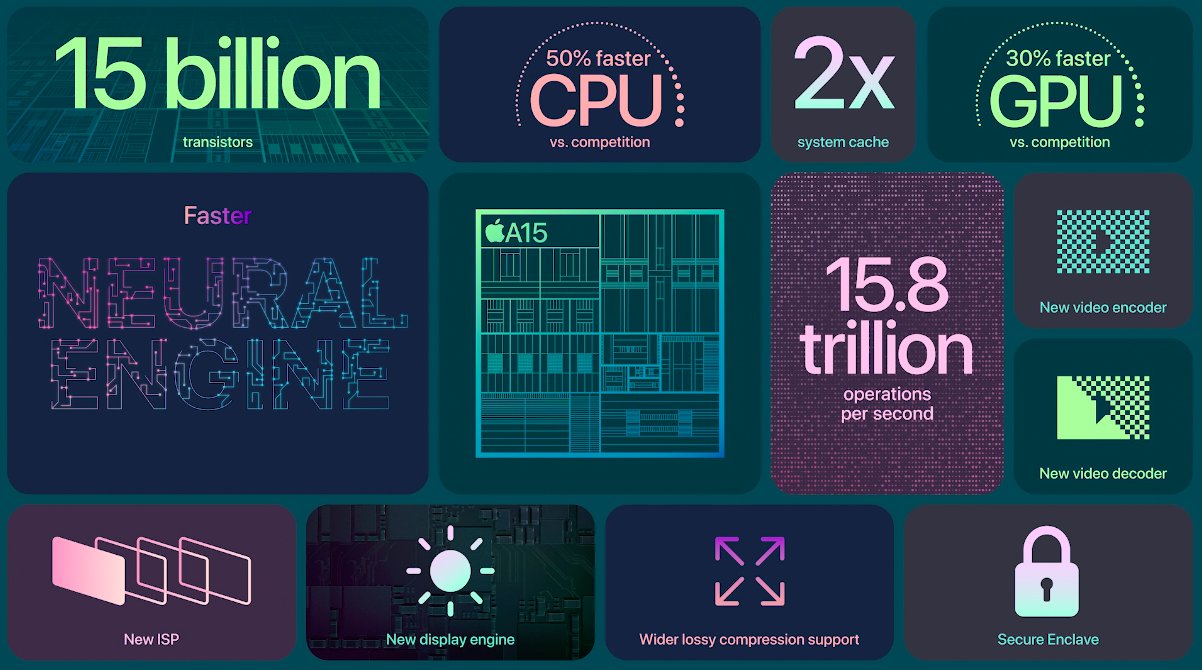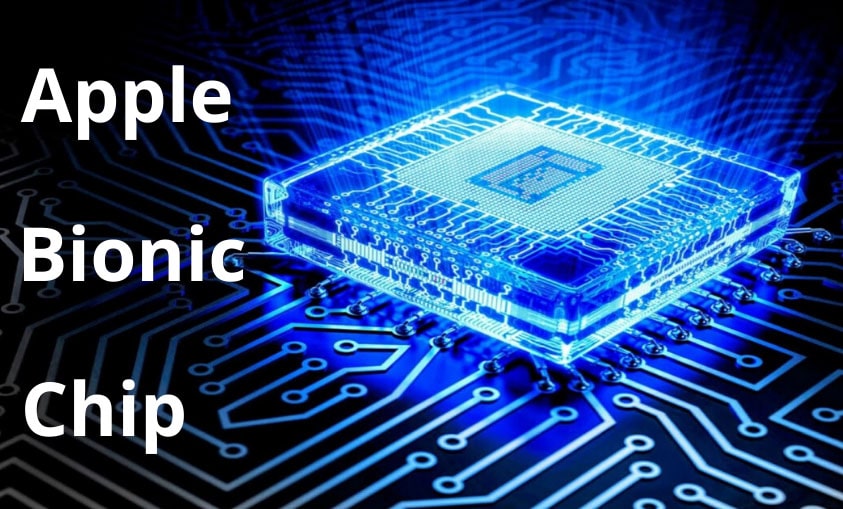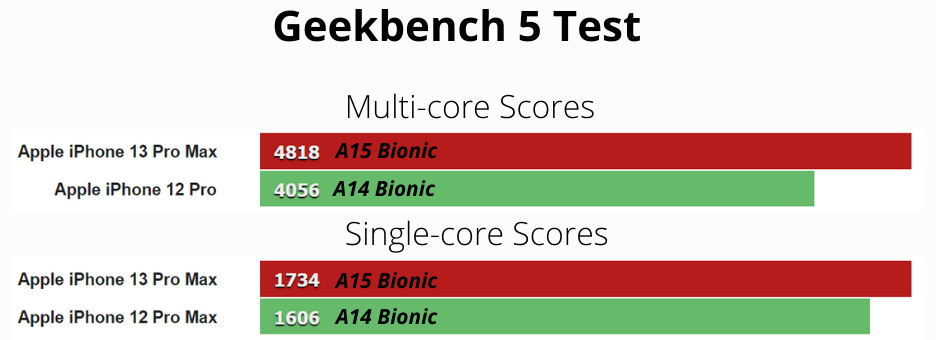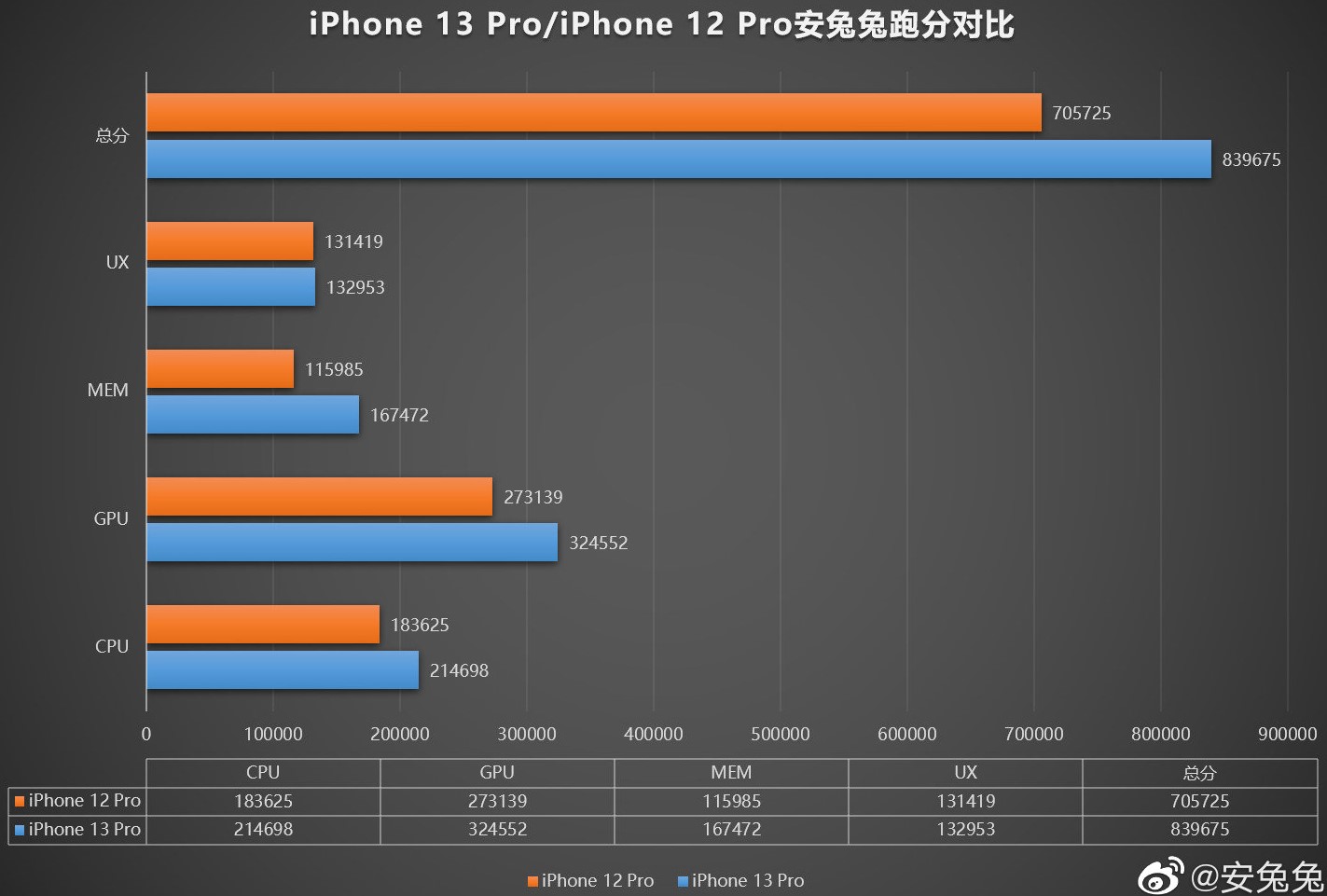Every year in Fall, Apple launches a new iPhone series. Last year, it was the iPhone 12 series, and this year, we have seen the launch of the iPhone 13 series. However, the current tech industry is shaken up a bit due to the ongoing processor or chip shortage around the globe. The demand for microprocessors has grown immensely, and the supply cannot catch up to it. However, Apple does not want to delay the launch of the iPhone 13 series. The A15 Bionic chip powers the entire iPhone 13 lineup of smartphones. In addition, the A15 chip also powers the new iPad mini tablet, which makes the iPad mini just as powerful as it is portable. The A15 chip has a two times larger system cache and a new image signal processor. It also has a secure enclave, a new display engine, a new Video Encoder/Decoder, and better compression.
- Leak: iPhone 14 first look reveals a notch-less design.
- iOS 16 features leaked.
- Comparison between A15 Bionic and Qualcomm’s 888.
Apple A15 Bionic vs A14 Bionic
Manufacturing Process
This time, TSMC goes with a 5nm manufacturing processor, but for the A15 Bionic, they use an improved 5nm process known as N5P. In terms of lithography, both the A14 Bionic and A15 Bionic will be the same, but the improved 5nm mode should result in improvements in terms of power efficiency and performance.
The improvements in power efficiency and performance are essential for Apple as the iPhone 13 Pro and iPhone 13 Pro Max offer 120Hz ProMotion display and 5G modems. Both of them will drain quite a lot of battery, and the A15 Bionic chip, with its improved 5nm process, needs to make up for it.
The new A15 Bionic chipset has 15 billion transistors. That compares with the 11.8 billion transistors found inside the A14 Bionic chipset and the 8.5 billion transistors found inside the A13 Bionic chipset.

CPU & GPU
Like the A14 Bionic SoC, the A15 Bionic chip also packs 6 cores with a 2+4 configuration. The first two cores are built for high performance, and the remaining four cores are assigned for power efficiency. Talking about the clock speeds, we see a maximum frequency of 3.23GHz.
For the GPU, we see a new 5-core GPU (for 13 Pro & 13 Pro Max only) and 4-core GPU (for standard iPhone 13 & 13 Mini) that will offer better performance compared to the A14 chip’s 4-core GPU.
CPU Performance: The new 6-core CPU in the A15 chip is up to 50 percent faster than the competition and handles demanding tasks smoothly and efficiently.
The A15 Bionic for iPhone 13, 13 Mini, 13 Pro and 13 Pro Max has a CPU of up to 3.23GHz. For iPad mini (6th generation), the CPU is 2.93GHz.
| Antutu | A14 Bionic | A15 Bionic |
| CPU Scores | 183625 | 214698 (17%+) |
| GPU Scores | 273139 | 324552 (19%+) |
GPU Performance: The A15 processor (5-Core GPU) has a 50% faster graphics processing unit than the competition. Apple claimed it has the highest graphics performance in any smartphone ever. It should be noted that A15’s 4-core GPU is 30% faster than the competition.
The “up to 5 cores” of the GPU applies to the iPhone 13 Pro,13 Pro Max and iPad mini (6th generation). For the iPhone 13 and 13 Mini, Apple has used 4-core GPU in the A15 chip.
Benchmark Test
Talking about the Geekbench 5 test, we see that the A15 bionic-powered iPhone 13 Pro Max scored 1734 points on the single-core test, while on the multi-core test, the highest score recorded is 4818 points. On the other hand, the last-gen A14 Bionic-powered iPhone 12 Pro Max has achieved up to 1606 points for single-core and 4056 points for multi-core. So, the improvement is less impressive.
In the AnTuTu benchmark test, the A15 Bionic-powered iPhone 13 Pro (6GG+1TB) achieves an overall score of 839675. On the other hand, the A14 Bionic-powered iPhone 12 Pro has scored an overall 705725 points. So, we can say that the A15 chip provides a 19% improvement over the A14 chip.





